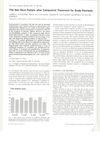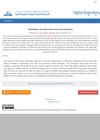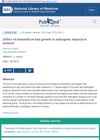TLDR Some chemicals and drugs can cause hair loss, which usually grows back after stopping the treatment.
The 2019 document highlights the recognition of hair loss (alopecia) as a potential side effect from exposure to certain chemicals and drugs. It explains hair anatomy and growth cycles, differentiates between nonchemical and chemical-induced hair loss, and emphasizes the challenges in proving the latter. The document details anagen-type hair loss, which can occur rapidly after taking drugs that inhibit follicular mitoses, such as cyclophosphamide and doxorubicin, and notes that hair typically regrows 2 months post-therapy. It also describes telogen effluvium, which manifests around 2 months after drug exposure, with a list of associated medications provided. Cases of occupational alopecia due to substances like selenium are mentioned, along with a range of drugs that may cause reversible hair loss. The difficulty of establishing a definitive link between hair loss and specific chemicals or drugs is underscored due to confounding factors.
 8 citations
,
September 1995 in “Acta Dermato Venereologica”
8 citations
,
September 1995 in “Acta Dermato Venereologica” Calcipotriol treatment for scalp psoriasis does not cause hair loss.
 147 citations
,
April 1994 in “Drug Safety”
147 citations
,
April 1994 in “Drug Safety” Some drugs can cause hair loss or increase hair growth, but these effects are usually reversible when the drug is stopped.
13 citations
,
December 1977 in “Journal of Toxicology and Environmental Health” High levels of phenyl glycidyl ether vapor caused hair loss in rats.
1 citations
,
August 2021 in “Cosmoderma” Low-dose oral minoxidil is effective and well-tolerated for treating hair loss.

Some treatments like minoxidil, finasteride, and surgery can help with hereditary hair loss.
 22 citations
,
February 2008 in “Journal of Dermatological Science”
22 citations
,
February 2008 in “Journal of Dermatological Science” EPR spectroscopy showed that spontaneous hair growth results in thicker skin and less pigmented hair than depilation-induced growth.
January 2007 in “Strait Pharmaceutical Journal” Water-soluble minoxidil effectively promoted hair growth in mice.
 1 citations
,
September 2002 in “PubMed”
1 citations
,
September 2002 in “PubMed” Minoxidil helps stimulate hair growth and reduce hair loss in women with androgenic alopecia.
January 2002 in “Journal of the Korean Medical Association” Recent research has provided important insights into hair growth and hair loss treatments.
 370 citations
,
September 1999 in “The New England Journal of Medicine”
370 citations
,
September 1999 in “The New England Journal of Medicine” Finasteride and minoxidil are effective for hair loss, but continued research is needed for better treatments.
35 citations
,
January 1990 in “PubMed” Cyclosporin A boosts hair growth in nude mice, but minoxidil does not.






